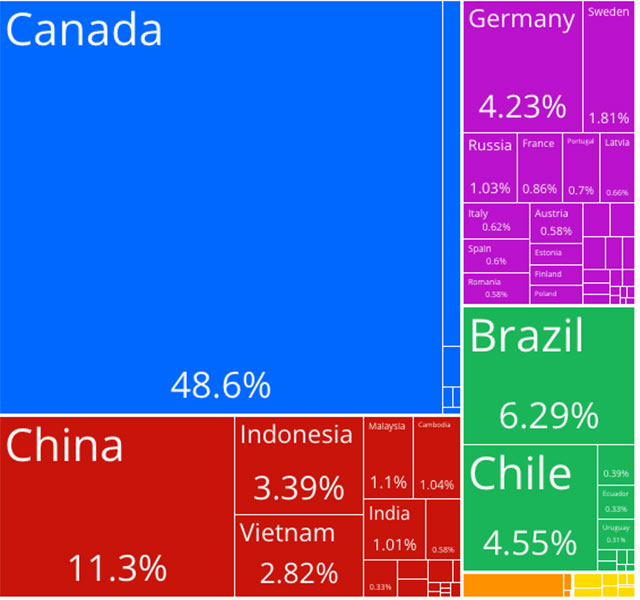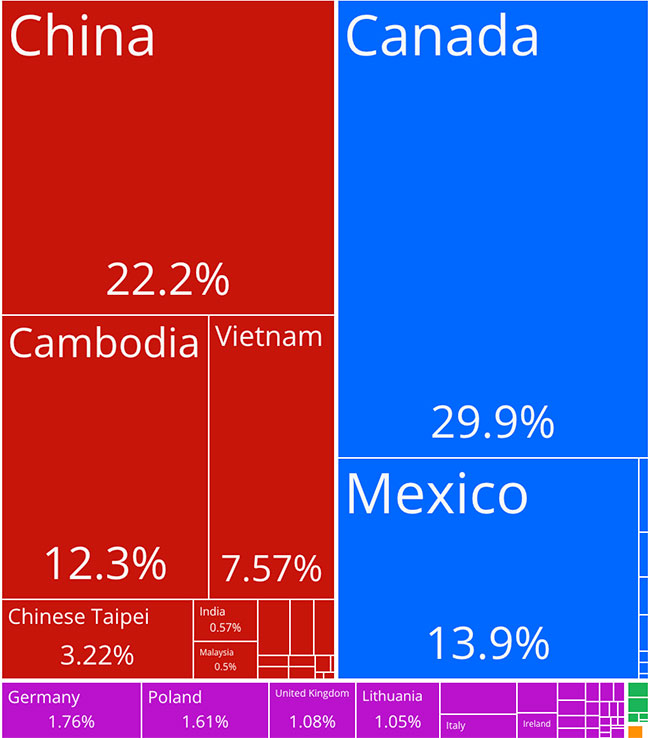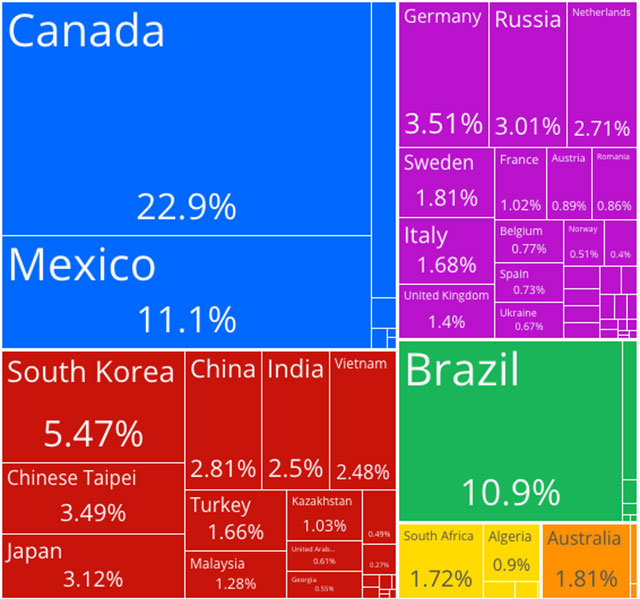The US Foreign Aid Pause Has Already Done “Irreparable Harm”
Shortly after his inauguration, President Donald Trump signed a flurry of executive orders that signaled his intent to remake the federal government—including one that paused all US foreign assistance for 90 days. The order was the first in a series of extraordinary moves that have upended the United States Agency for International Development (USAID) and halted crucial, life-saving work around the world. Today, Secretary of State Marco Rubio, who is on a trip to El Salvador, told reporters that he is now the acting director of USAID and that some of its functions would continue within the State Department—after a review to ensure that these programs are aligned with the Trump administration’s foreign policy priorities.
Foreign assistance has long been a hallmark of America’s role in the world, regardless of which party occupies the White House or controls Congress. The underlying principle is that while feeding the hungry and treating the sick are worthy efforts, doing so is also beneficial to long-term American interests in national security and trade. When USAID shipments of medical supplies arrived in Liberia during the 2014 Ebola epidemic, the boxes read “FROM THE AMERICAN PEOPLE.”
The United States is the world’s single largest provider of foreign assistance, though this accounts for only one percent of the six trillion dollar federal budget. In 2023, Congress allocated $66 billion for foreign aid, which is administered through the State Department and USAID. Through bipartisan negotiations, Congress determines how foreign aid is spent on everything from disaster relief and public health to foreign military assistance and democracy promotion. Humanitarian assistance is primarily distributed by USAID, which funds partner agencies on the ground.
In the two short weeks since Trump took office, his administration has enacted an unprecedented stoppage of foreign aid and a dramatic overhaul of staff at USAID. On January 24, the State Department issued a “stop work” order for existing and new programs, with exceptions for emergency food assistance and military aid to Israel and Egypt. Though Rubio later issued an additional waiver for “life-saving humanitarian assistance,” aid workers said that the exemptions are unclear and vital programs had already been disrupted. There were reports that soup kitchens had shut down in famine-stricken Sudan. In Thailand, hospitals treating refugees fleeing the conflict in Myanmar had suspended care. In South Africa, HIV patients were turned away from US-funded clinics.
Last week, more than fifty career civil servants and foreign service officers at USAID were placed on administrative leave, followed by layoffs of nearly 400 contract employees.
To Jeremy Konyndyk, who served as a high-level political appointee at USAID during both the Biden and second Obama administrations, this was a sign that the Trump administration did not intend to perform a good-faith review of the efficacy of foreign aid programs. “This is a ‘destroy the village in order to save it’ approach,” Konyndyk, now the president of Refugees International, told me on Friday when we spoke about the foreign aid pause and the havoc inside USAID.
The future of USAID remains murky, though the Trump administration’s plans are beginning to erratically take shape. Over the weekend, Elon Musk, who is leading the government efficiency taskforce DOGE, described USAID as a “criminal organization” on X, and suggested it was “time for it to die.” Early on Monday, Musk added that Trump had given him approval to “shut it down.” After some employees were prevented from entering USAID headquarters, a group of Senate and House Democrats held a press conference condemning the administration’s actions. “Musk and his band of unelected acolytes at DOGE have… thrown the agency into chaos through a concerted campaign of harassment and intimidation of its employees,” Don Beyer, a congressman from Virginia, told reporters.
The conversation below was edited for length and clarity.
How has aid and assistance traditionally fit into American foreign policy? Is it typically a priority across party lines?
Leaders of both parties have, at least for the last 20 years, understood that doing good in the world is, in and of itself, an important US national interest. We operate very distinctly from, say, the way China approaches its partnerships with low-income countries. We are not doing this on a transactional basis, though we do derive benefits. But we’re not saying, “We will give you foreign aid only if you do x.”
For example, during Covid 19, which I was directly involved with, the vaccine diplomacy models of the US and China were wildly different. China’s model was they would go and they would charge extremely high prices for vaccines while demanding policy concessions. So a number of countries had to agree to remove recognition of Taiwan in order to get Chinese vaccines. Some did agree because at that time, during the tail end of the first Trump administration, the US was not sharing any vaccines. But once the US started donating our vaccines, they vastly preferred working with us. We provided them free of cost, on a humanitarian basis. It demonstrated that the partnership between those countries and the United States was one based on shared values.
The Trump administration has talked about US foreign aid as a transactional tool, that we will give it to countries who do what we want and not to countries who don’t. That removes a huge strategic comparative advantage that we have vis a vis China. When it is so baldly extractive, it almost feels like extortion.
To come to the executive order that President Trump signed on his first day in office, which temporarily suspended foreign assistance programs for 90 days. Can you contextualize that? Has this ever happened before?
There’s no precedent for that. It’s not uncommon for a new administration to come in and do a review, but it’s not appropriate to stop everything while you’re doing that. It’s akin to deciding that you don’t like the destination of the plane, so you’re just going to turn the engine off and crash it into the ground.
It is going to irreparably harm our foreign assistance capacity and waste enormous amounts of taxpayer resources. The administration has said they don’t like the Diversity, Equity, and Inclusion (DEI) programs and other so-called “woke” programs. Frankly, I’m not even sure what that means in the context of foreign aid. But those can be rooted out in a much more surgical way, if that’s truly the goal.
The executive order described the foreign aid industry and bureaucracy as “not aligned with American interests, and in many cases, antithetical to American values.” Is there a sense that the administration thinks of the practice of foreign aid at large, as something that has become politicized?
They clearly do. One of the things that was very interesting to me, having served at USAID twice as a political appointee, was that to the career staff, their day-to- day ability to have an impact was often pretty unrelated to which party was in control. There were some who were able to do great things during the Trump administration and then ran into challenges during the Biden administration.
“Frankly, it won’t be possible to reopen many of these programs in three months’ time. Already, many of the organizations that work with the US government, both domestically and internationally, are laying off staff.”
But fundamentally, as career government servants, you are going with the flow of whichever party is in charge. That is an ethos that’s deeply embedded in the career government service, particularly in the foreign affairs agencies, and it’s an ethos that I think the Trump administration has never understood. They could advance their agenda much more effectively if they treated those in the building as professionals rather than as adversaries
On January 24, the State Department put out a “stop work” order for both existing and future aid, with some exceptions for emergency food programs and foreign military aid. What did that look like in the agency and in the countries where aid is being performed?
It prompted mass confusion within the US government about how this should be implemented, because the guidance was unclear, and there was really no template or precedent for how you do something like that. There was mass confusion amongst the partners providing aid on the ground in terms of what this meant for them. It meant pulling critical, life-saving relief out of refugee camps. It meant shutting down clinics—a lot of people will needlessly die from lack of health services.
Frankly, it won’t be possible to reopen many of these programs in three months’ time. Already, many of the organizations that work with the US government, both domestically and internationally, are laying off staff. They cannot keep the lights on.
There has been a dramatic overhaul of staffing at USAID, with some senior staff being placed on leave and hundreds of contract employees being laid off. What is the potential impact of this?
Nothing like this has happened before, and it is debilitating to the US government’s ability to meaningfully oversee and account for foreign assistance. I care deeply about the morale and the well-being of the staff who’ve been let go. But even if you don’t care about that, I would hope you care about the effective oversight of taxpayer money. Contract employers are doing the day-to-day legwork that makes that place run—from grant administration to data analytics.
What I take away from these layoffs, apart from the obvious cruelty and capriciousness of it, is that this is not how you would approach a genuine review of foreign aid. I worked very closely with the Global Health Bureau when I was at USAID, and around 50 percent of their employees are contractors. You would not suddenly halve the workforce if you expected any of this to continue.
On January 27, most of the agency’s senior leadership was put on involuntary administrative leave, including much of the general counsel’s office. That included two ethics attorneys, whose job is to advise political appointees on what they can and can’t legally do. This is exactly what you would do if you were seeking to remove any constraints to the destruction of the agency and any constraints to unlawful behavior. You get rid of all the career officials who are able to stand in your way, and all the lawyers who can tell you that what you’re doing is unlawful.
What do these early moves from the administration around foreign aid herald for the future role of the US in the world?
It becomes a United States that is much diminished. This shows, in practice, what an “America First” approach to foreign policy and national security looks like: pulling back from the world, pulling back from helping people who have long relied on their partnerships with the US government. It is an America that, on the world stage, is smaller, stingier, meaner, and, ultimately, much less respected and much less influential.








